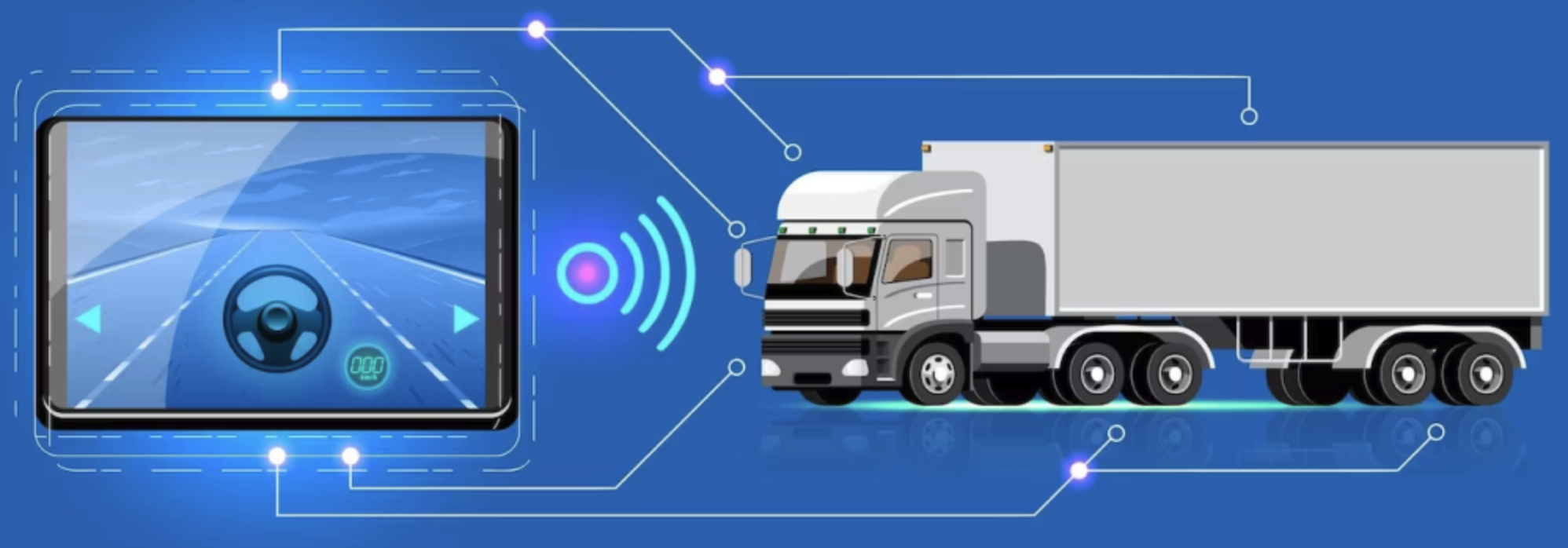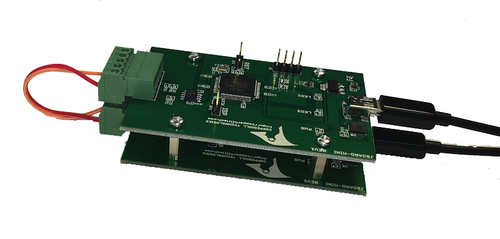Blog
Recent Posts
Understanding SAE J1939 and Telematics
Posted by on
 SAE J1939 is a high-level communications protocol standard widely used in the commercial vehicle industry. Developed by the Society of Automotive Engineers (SAE), it is primarily utilized for communication and diagnostics among vehicle components and systems, including engines, transmissions, and braking systems. When integrated with telematics, SAE J1939 unlocks new possibilities for vehicle monitoring, diagnostics, and fleet management.
SAE J1939 is a high-level communications protocol standard widely used in the commercial vehicle industry. Developed by the Society of Automotive Engineers (SAE), it is primarily utilized for communication and diagnostics among vehicle components and systems, including engines, transmissions, and braking systems. When integrated with telematics, SAE J1939 unlocks new possibilities for vehicle monitoring, diagnostics, and fleet management.
The SAE J1939 Protocol
SAE J1939 is based on the Controller Area Network (CAN) protocol and operates on a robust, multi-master, and message-oriented framework. It defines a structured methodology for transmitting data in vehicular networks, ensuring compatibility and interoperability between various Electronic Control Units (ECUs). The protocol specifies:
- Parameter Group Numbers (PGNs): These identify specific data or messages, such as engine speed, fuel consumption, or fault codes.
- Data Length Codes (DLCs): These indicate the size of the data payload.
- Source Addresses (SAs): These identify the origin of the data message.
- Broadcast and Addressable Communication: Messages can be sent to all nodes (broadcast) or a specific device (point-to-point).
With its real-time capabilities, SAE J1939 is a cornerstone for diagnostics and vehicle data acquisition in heavy-duty and off-road applications.
What is Telematics?
Telematics is the intersection of telecommunications and informatics, enabling the collection, transmission, and analysis of data from vehicles. Telematics systems use wireless communication technologies, GPS, and cloud-based analytics to provide actionable insights. Common features of telematics include:
- Vehicle Tracking: Real-time location monitoring using GPS.
- Fleet Management: Optimizing routes, fuel usage, and maintenance schedules.
- Remote Diagnostics: Accessing vehicle performance data and identifying issues before they escalate.
- Driver Behavior Analysis: Monitoring speed, braking patterns, and other driving habits to improve safety.
The Integration of SAE J1939 and Telematics
The combination of SAE J1939 and telematics creates a powerful platform for enhanced vehicle management. By leveraging the standardized communication framework of SAE J1939, telematics systems can extract and transmit detailed vehicle data to centralized platforms for analysis and decision-making. Key benefits include:
- Enhanced Diagnostics: Telematics systems can decode fault codes and performance metrics from J1939 messages, enabling predictive maintenance and minimizing downtime.
- Improved Fleet Efficiency: Real-time data on fuel consumption and engine performance allows fleet managers to optimize operations.
- Regulatory Compliance: Telematics systems, using J1939 data, can ensure compliance with emissions standards and electronic logging requirements.
- Safety Monitoring: Integration with J1939 data streams provides insights into critical safety systems like braking performance and stability controls.
Use Cases in Industry
SAE J1939 and telematics find applications across various industries:
- Trucking and Logistics: Monitoring fuel efficiency, ensuring regulatory compliance, and optimizing routes.
- Construction Equipment: Real-time tracking of machinery usage and performance.
- Agriculture: Precision farming with advanced monitoring of tractors and harvesters.
- Public Transportation: Enhancing fleet safety, scheduling, and maintenance.
Challenges and Future Directions
While the integration of SAE J1939 and telematics offers substantial advantages, it comes with challenges:
- Data Security: Ensuring the security of transmitted data to prevent unauthorized access or cyberattacks.
- Complexity in Implementation: Standardizing and integrating telematics systems across diverse vehicle types and manufacturers.
- Scalability: Managing the growing volume of data from expanding fleets.
Future developments aim to address these challenges by improving encryption protocols, enhancing interoperability standards, and leveraging artificial intelligence for predictive analytics.
Conclusion
SAE J1939 and telematics represent the convergence of automotive engineering and modern data technologies. Their integration not only enhances vehicle performance and fleet management but also paves the way for smarter, more connected transportation systems. As advancements in telematics and communication protocols continue, the potential for innovation in the automotive and transportation sectors remains vast.
SAE J1939 Starter Kit and Network Simulator
Our JCOM.J1939 Starter Kit and Network Simulator was designed to allow experienced engineers and beginners to experiment with SAE J1939 data communication without needing to connect to a real-world J1939 network, i.e., a diesel engine.
To establish a network, you need at least two nodes. This applies especially to CAN/J1939, where the CAN controller will shut down after transmitting data without receiving a response. Therefore, our jCOM.J1939 Starter Kit and Network Simulator consist of two J1939 nodes: our jCOM.J1939.USB, an SAE J1939 ECU Simulator Board with USB Port. More Information...
Copperhill Technologies and Their J1939 Gateways
Copperhill Technologies is a company known for providing high-quality, reliable networking solutions for industrial and transportation applications. Among its range of offerings, their J1939 gateways stand out as key components for connecting devices that use the SAE J1939 protocol, a standard that is integral to modern heavy-duty vehicles and industrial machinery.Understanding SAE J1939 The SAE J1939 [...]
JCOM1939 Monitor Software - A Critical SAE J1939 Diagnostic and Analysis Tool
The JCOM1939 Monitor Software is a specialized tool designed to interface with and monitor data on the SAE J1939 communication network. SAE J1939 is a standardized protocol commonly used in heavy-duty vehicles, agriculture equipment, and industrial machinery for onboard diagnostics and data communication. This essay explores the features, applications, and significance of JCOM1939 Monitor Software in [...]
Know OBD2 Before You Start That Development Project
We at Copperhill Technologies offer a variety of CAN (Controller Area Network) devices for developing automotive and industrial embedded systems. In that capacity, we receive frequent inquiries regarding OBD2 (Onboard Diagnostics). OBD2, or Onboard Diagnostics Second Generation, is a vehicle diagnosis system found in modern cars and trucks. The OBD2 system collects data from sensors and [...]
Contactless CAN Bus, SAE J1939, OBD-II, SAE J1708 Reader
CAN (J1939) and J1708 networks transport multiple valuable information for telematics of vehicles and stationary objects, such as engine parameters, ABS, EPS, diagnostic codes (DTC), and much more. Crocodile contactless readers are used in telematics systems to gather data from digital buses without breaking the insulation of wires and electrical contacts and without sending active requests [...]
Data Acquisition from Heavy Duty Vehicles Using SAE J1939 CAN Bus
Modern vehicles have electronic control units (ECUs) to control various subsystems such as the engine, brakes, steering, air conditioning, and infotainment. These ECUs (or ‘controllers’) are networked to convey information and output measured and calculated data to each other.This in-vehicle network is a data goldmine for improved maintenance, measuring vehicle performance and its subsystems, fleet [...]
SAE J1708 To SAE J1939 Gateway for Vehicle Telematics and Fleet Management
The MasterCAN V-Gate module reads messages from an SAE J1587 and SAE J1939 network, filters and merges the data into single SAE J1939 messages, and transfers the processed data via the output CAN Bus interface. The converter is suitable for vehicles and machinery equipped with SAE J1708 (SAE J1587) networks. The device input signals may be:PGNs (Parameter Group Numbers) according [...]
Electronic Logging Devices (ELD) for Fleet Management – SAE J1939 And SAE J1708/J1587 Parameters
An electronic logging device (ELD) is electronic hardware that is attached to a commercial motor vehicle engine to record driving hours. The driving hours of commercial drivers (truck and bus drivers) are regulated by a set of rules known as the hours of service (HOS). The Commercial Vehicle Driver Hours of Service Regulations vary in Canada and [...]
4G Telematics Unit With OBD-II (CAN Bus) Port For Fleet Management
The TMU Pi3 telematics unit by Autopi (Denmark) utilizes the Raspberry Pi 3 Model A+ SBC, and it connects to in-vehicle CAN Bus networks via the OBD2 port.The device uses the 1,4-GHz Broadcom BCM2837B0 SOC with Cortex-A53 64-bit quad-core processor, including 512-MiB SDRAM and a 32-GiB micro SD card with installed Raspbian Jessie operating system and Autopi [...]
Build an ELD Better, Faster, and Cheaper Than KEEPTRUCKIN, Samsara, and Others
To mention it upfront, I am not suggesting building the best ELD (Electronic Logging Device) solution in the market. Such systems already exist, and while I like the idea of disrupting the market, I deem such an attempt extremely time-consuming, thus expensive, and most likely not worth the efforts. In other words, KEEPTRUCKIN and Samsara [...]
 Loading... Please wait...
Loading... Please wait...

